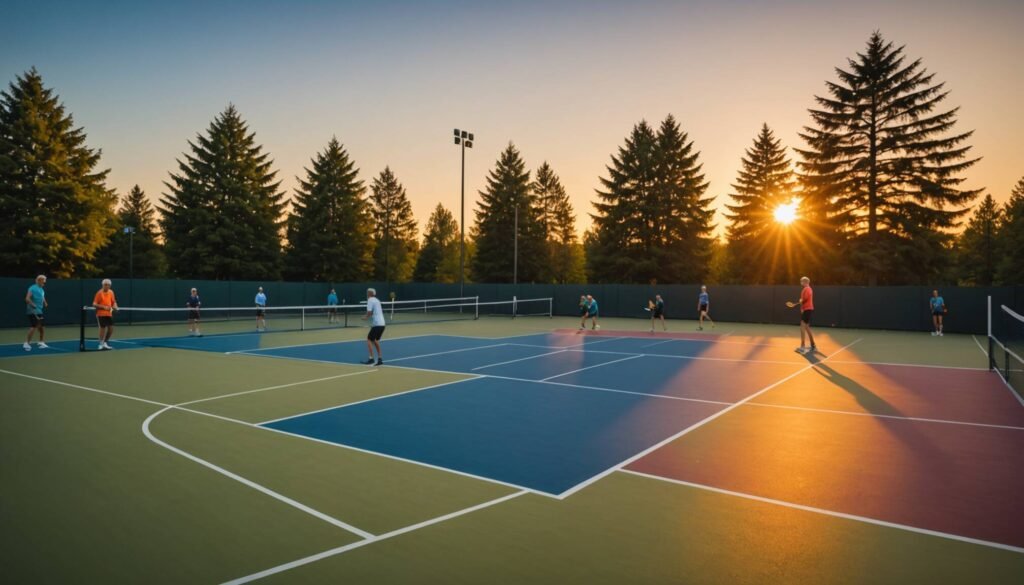Is Pickleball’s Explosive Growth Finally Slowing Down? A Deep Dive into 2025 Participation Trends
Understanding Pickleball’s Recent Growth Trajectory
The meteoric rise of pickleball has been one of the most remarkable stories in American sports over the past few years. According to the latest data from the Sports & Fitness Industry Association, approximately 19.8 million Americans are now playing pickleball – marking a staggering 45.8% increase from 2023. This represents an extraordinary 311% growth rate over just three years, securing pickleball’s position as America’s fastest-growing sport for the fourth consecutive year.
Signs of a Potential Plateau
However, new mid-year data from SFIA’s 2025 participation report suggests we may be witnessing the first signs of this explosive growth beginning to stabilize. While pickleball remains the fastest-growing sport among over 30 tracked activities, its projected growth rate for 2024-2025 has decreased to 14.7% – a significant drop from the previous year’s 45% surge.
Historical Context: Pickleball’s Growth by the Numbers
To truly understand this shift, let’s examine pickleball’s remarkable five-year participation trajectory:
- 2019: 3.46 million players
- 2020: 4.20 million players
- 2021: 4.82 million players
- 2022: 8.95 million players
- 2023: 13.58 million players
- 2024: 19.81 million players
What This Means for the Sport’s Future
While some might view this slowdown with concern, industry experts suggest this is actually a natural and potentially healthy evolution for the sport. The initial explosive growth phase, particularly during the COVID-19 pandemic, was unprecedented and unsustainable long-term. The current trend indicates a shift toward more sustainable, manageable growth patterns.
Professional Pickleball’s Growing Appeal
Despite the participation growth rate slowing, professional pickleball continues to gain momentum. Recent Major League Pickleball (MLP) data shows impressive viewership numbers, with a single Saturday match during the MLP Finals in NYC attracting an average of 433,000 viewers on CBS. This suggests that while new player acquisition might be stabilizing, the sport is successfully developing a dedicated spectator base.
The Infrastructure Challenge
The current challenge facing pickleball isn’t attracting new players – it’s building sufficient infrastructure to support existing demand. Many communities are struggling to provide enough courts and facilities to accommodate the millions of players who have already embraced the sport. This infrastructure bottleneck could be contributing to the slowdown in participation growth.
Understanding the Data Collection
It’s important to note that SFIA’s projections are based on approximately 20,000 online interviews conducted nationwide. These surveys are weighted across various demographics, including gender, age, income, ethnicity, household size, region, and population density. The organization emphasizes that these figures represent an early snapshot and could shift, particularly given the seasonal nature of many sports activities.
What This Means for New Players
For those just discovering pickleball or considering taking up the sport, this stabilization period could actually be beneficial. As the initial surge settles, communities and facilities can better plan for and accommodate player needs. New players might find it easier to access resources, equipment, and court time as the infrastructure catches up with demand.
Looking Ahead
While the explosive growth phase might be cooling, pickleball’s future remains bright. The sport has established a solid foundation with a dedicated player base, growing professional scene, and increasing mainstream recognition. The challenge now shifts from rapid expansion to sustainable development, ensuring the sport can effectively serve its millions of enthusiasts while continuing to welcome newcomers at a more measured pace.
This evolution from explosive growth to sustainable expansion might just be exactly what pickleball needs to secure its long-term position in the American sports landscape.



